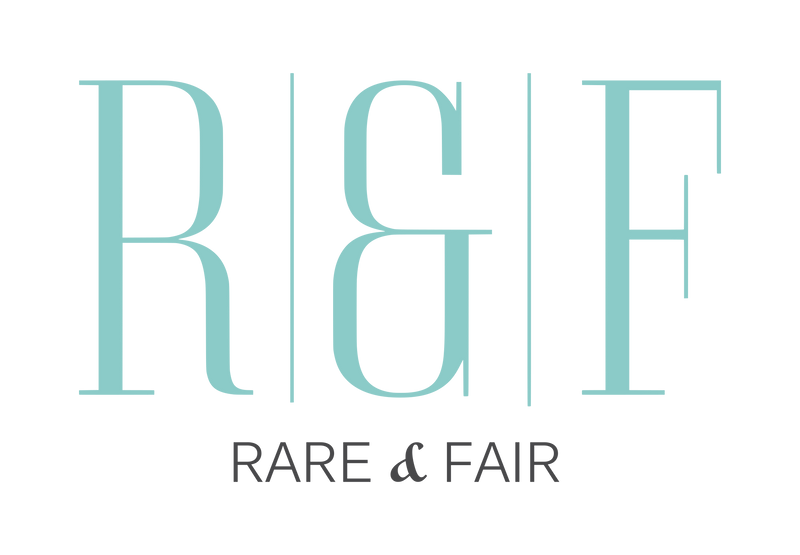As an ethical fashion brand we believe that sustainability and style go hand in hand, but we know it can seem like a daunting task creating an ethical wardrobe if you are on a tight budget.
As the ethical fashion industry builds momentum, there is a growing demand for ethical clothing that is not only stylish, but that also caters for the discerning shopper on a budget. It’s going to take time to undo the 'cheap and quick' mindset that we have adopted with fast fashion, but where ethical clothing can sometimes seem more expensive, you’ll find the value in its quality and longevity.
If you are serious about creating an ethical wardrobe, here are six cost-effective ways you can curate an ethical collection that lasts:
1. Buy nothing, spend nothing. To begin with anyway...
It might seem counterintuitive, but this is a prime opportunity to take control of your current wardrobe - knowing more about ethical clothing and why it matters may just give you a new perspective and appreciation for what you already own.
Ask yourself this: when was the last time you seriously looked at, and considered wearing, every item currently in your wardrobe?
Seasons change, people change, clothes will fade, pill or suffer from rips or tears, but if you are able to, with a little care and thought, ‘rescue’ some beloved items, you may find you have more than you originally thought.
2. Research
Of course, it’s unrealistic to expect anyone to never buy anything new ever again. Aside from practicalities, fashion itself means so much more than just clothing to protect us from the elements - our style and how we dress can be an extension of who we are, and sometimes, what we stand for.
A key part of deciding where to purchase ethical clothing from lies in the research: when you think you have found a brand that is aligned with your values, like and follow their social sites, and subscribe to their blogs and newsletters - this way you can be in the know about special offers, sales, and opportunities to purchase off-season items at a fraction of the cost.
3. Play the long game: invest in quality over quantity
Where cheap clothes might start to fall apart after just a few washes, ethical clothing is created with quality in mind and made to last. If you were to consider buying one ethically made item in place of a few cheaply made items, not only will you save money in the long run, but also the disappointment when something becomes unwearable after just a few wears.
Be thoughtful about your purchases, and make sure new items have earned their place in your collection - before you purchase something new consider how versatile it is: can it be partnered with items you currently own? Does it have the flexibility to be dressed up or dressed down?
4. Renting
Many ethical brands are becoming more accessible via clothing rental services, enabling consumers to enjoy high-value pieces at a fraction of the price, whilst increasing support for ethical brands.
Here at RARE & FAIR we have a collection of items available for rent at ByRotation - the UK’s leading peer-to-peer fashion rental app which focuses on ‘challenging overconsumption habits’ by utilising clothes already in circulation.

5. Clothing swaps
If step one didn’t produce any long lost wardrobe loves, then swapping items for something new might be just the ticket!
The phenomenon of clothing swaps is catching like wildfire, whether it’s a small swap between friends or a ticketed event, it’s an opportunity to socialise while revamping your wardrobe at the same time. Swapping is a great way of reducing the amount of clothing going into landfill, and gives your items a chance to be loved by another.
The coronavirus pandemic may have put a pause on social events over the past few months, but there are plenty of options for swapping online - whether you are looking for a vintage item or just want to make a donation, it seems there’s something for everyone!
If you are interested in attending or hosting a clothing swap, Fashion Revolution, a key player in the ethical fashion movement, has created The Great Fashion Revolution Clothes Swap - in an effort to help with their goal of raising awareness about consumption and waste, they are spreading the word about the benefits of clothing swaps, and have a wide selection of useful resources if you are interested in hosting a swap yourself.

6. Charity shops
According to Charity Retail, there are upwards of 11 thousand charity shops in the UK, each one reducing the volume of items going into landfill, while raising substantial funds for their parent charities. They also play a big part in their local community, and have helped many a high street stay afloat while other businesses have struggled around them.
While the clothes themselves may not have originated from an ethical brand, thrifting or buying items in charity shops provides an affordable way to shop sustainably, supports the local job market, and keeps clothing out of landfill. In addition to helping you find vintage pieces, unique items, or something suitable for low budgets, charity shops raise around £300m for good causes each year. In 2017, the British Heart Foundation alone generated an income of 176.4 million pounds, and was ranked to be the leading charity shop in the UK.
The bottom line - start off small
We know it can seem like a daunting task switching up your wardrobe to be more ethical, but making small changes will help you achieve more in the long run. Take Oxfam’s Second Hand September for example - could you challenge yourself to shop second hand for 30 days? You might just surprise yourself!
Whether you are focusing on high-quality investment pieces or embracing new ways to shop, taking a more thoughtful approach will help you to create an ethical collection that you love...and you may just find it's not so daunting after all.
Share your thoughts!
Do you know of any other ways in which you can support ethical brands and shop sustainably? We would love to hear your success stories, please leave us a comment below!
Header Image by Matthew Henry via StockSnap.



